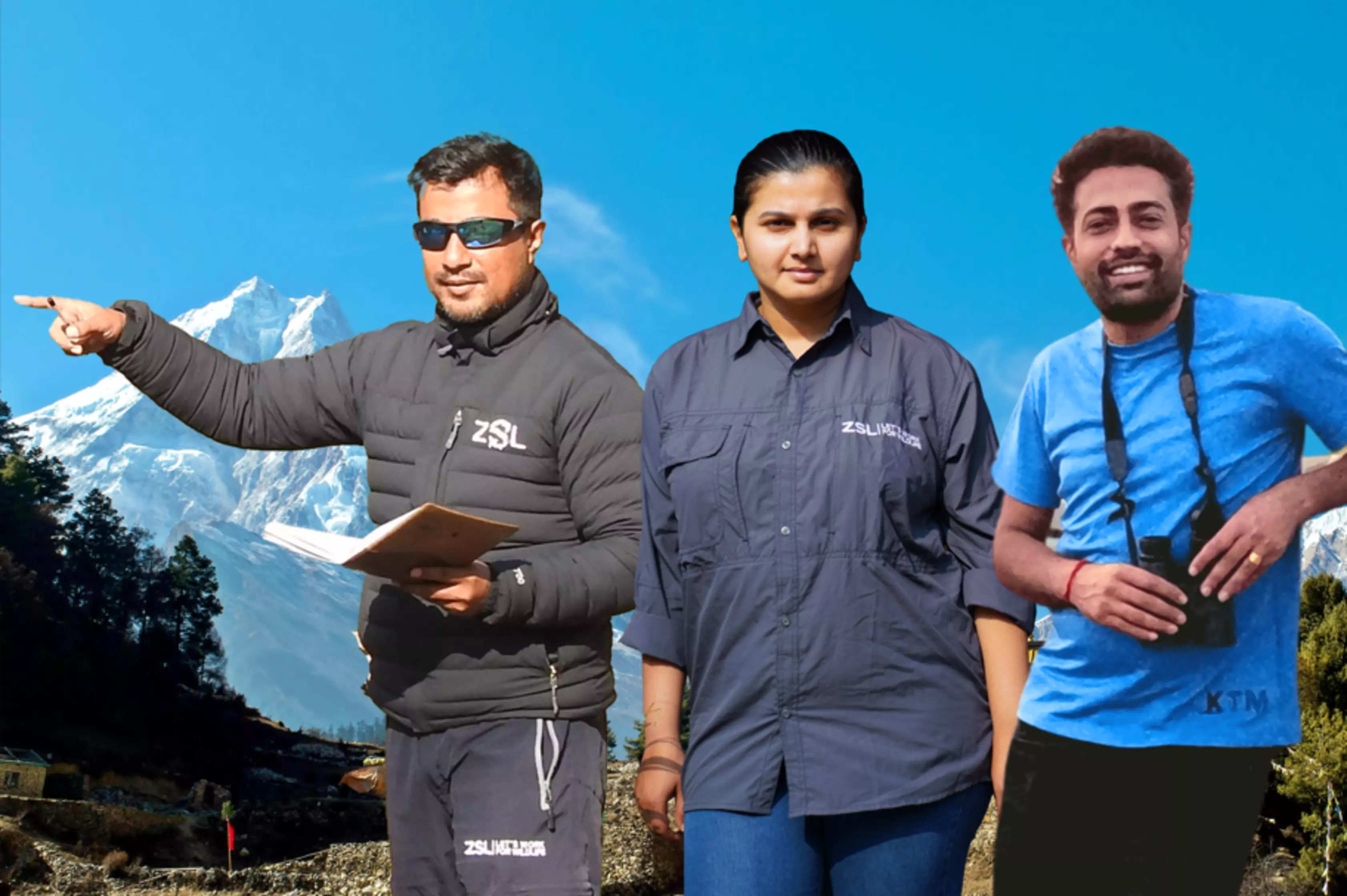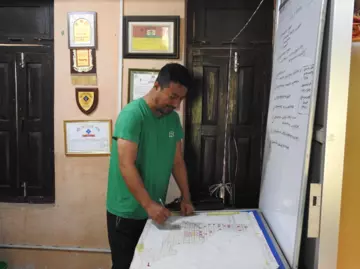
Across Nepal, our teams are working to bring vulnerable species back from the brink—and behind every conservation success are passionate people making it happen.
Meet three of our conservationists helping protect species across different regions of Nepal:
- Santosh Paudel, based in West Nepal, leads conservation efforts across Shuklaphanta and Banke National Parks.
- Prachanda Maharjan, based in East Nepal, supports wildlife recovery projects in Chitwan and Parsa National Parks.
- Asmita Pandey, working nationally, ensures conservation efforts are safe, inclusive, and community-led through her safeguarding and communications role.
Together, they are building a future where both wildlife and communities can thrive.
What first inspired you to protect wildlife?
"When I was posted at a field office early in my career in the finance department, I had the opportunity to work closely with nature and conservationists. It sparked a passion to preserve wildlife and their habitat for future generations." (Prachanda Maharjan, Field Programme Officer)

Prachanda’s first exposure to conservation work radically changed his career path. Today, as part of ZSL Nepal’s field operations, he works on projects like the rewilding of Parsa National Park—where former farmland and degraded land is being restored to vital tiger habitat. His shift from finance to frontline conservation reflects how much passion, flexibility, and dedication conservation careers often demand.
"When I was young, growing up in Meghauli, Chitwan—the buffer zone of Chitwan National Park—wildlife was always part of my surroundings. Watching rangers rescuing animals left a deep impression on me." (Santosh Paudel, Programme Officer)
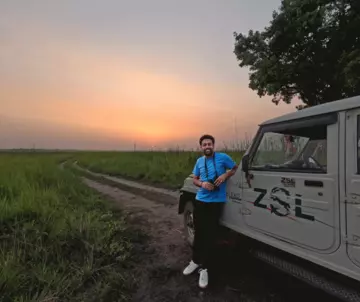
Santosh grew up witnessing the delicate balance between people and wildlife firsthand. Today, he works to improve human-wildlife coexistence across Nepal, helping communities living near protected areas find ways to coexist safely with endangered species like rhinos, tigers, and elephants—species that once roamed freely through the places he called home.
"I realised that scientific evidence and good intentions alone would not be enough to succeed at conservation—without community support and political will, even the best efforts would fail." (Asmita Pandey, Safeguarding Officer)
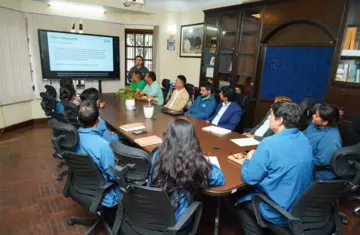
Asmita’s path into conservation has always been rooted in care—for people as much as for nature. Through her role leading safeguarding and communications at ZSL Nepal, she works closely with communities to ensure conservation is not just about protecting species, but about creating safe, inclusive spaces where everyone can participate, especially women. Her belief in the power of building others up runs through all aspects of her work.
What’s a moment that made you realise, "This is why I do this"?
"We captured a tigress and her three cubs on camera traps in an area we had been working to rewild. It was incredible to see a landscape that was once degraded now supporting apex predators again." (Santosh Paudel)
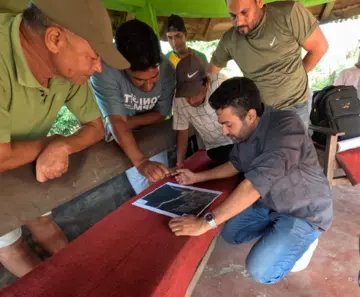
Santosh's work shows the direct link between strategic conservation and species survival. His rewilding projects restore native vegetation, water sources, and safe movement routes for big cats and prey species—helping create functioning ecosystems where wildlife can recover naturally.
"We released a rescued leopard into the dense forest of Parsa National Park. As the team stood in silence, the leopard cautiously emerged from the transport enclosure. It was a wave of emotion I’ll never forget." (Prachanda Maharjan)
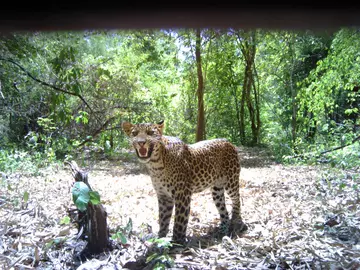
Prachanda’s work in Parsa often focuses on species reintroductions and habitat restoration. The leopard’s release was not just a symbolic moment—it marked the success of long-term recovery efforts in a landscape once thought lost. Prachanda’s team has also helped restore critical wildlife corridors that allow species like leopards and tigers to roam safely between fragmented habitats.
"I helped organise a community workshop where women were encouraged to speak up about conservation plans affecting their lives. Watching their confidence grow throughout the session—and seeing their perspectives shape the final outcomes—was a powerful reminder that conservation is strongest when it includes everyone." (Asmita Pandey)

For Asmita, conservation is not just about protecting wildlife—it’s about ensuring that human communities, especially marginalised groups, have ownership of conservation decisions. Her workshops help local women shift from passive participants to active leaders in protecting biodiversity.
What keeps you motivated, even when conservation is challenging?
"I remember the faces of the women who came to our conservation workshops—smiling, hopeful, determined. Their optimism, even when resources are scarce, reminds me why this work matters." (Asmita Pandey)
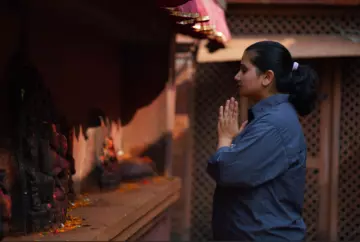
Asmita draws strength from the resilience of the communities she works with, particularly women advocating for sustainable resource management and species protection in some of Nepal’s most vulnerable ecosystems.
"The hope that future generations will still be able to see these species alive—not just in photos—keeps me motivated." (Prachanda Maharjan)
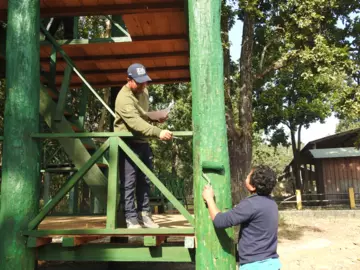
Prachanda works in some of Nepal’s toughest conservation landscapes, where habitat loss, poaching, and human conflict threaten species daily. His motivation is grounded in a long-term vision: that the efforts made today—no matter how small—can secure a future where Nepal’s wildlife still thrives.
"Coexistence isn’t a fixed goal—it’s a journey that requires ongoing commitment." (Santosh Paudel)
In Santosh’s work, coexistence means constant dialogue with local communities, conflict mitigation, and working to ensure that both people and wildlife benefit from conservation efforts. Every successful human-wildlife coexistence case he supports becomes part of a growing network of resilient communities.
Protecting species isn’t just about saving individuals—it’s about restoring whole ecosystems, building trust with local communities, and creating resilient futures for both people and wildlife. Thanks to conservationists like Prachanda, Santosh, and Asmita, we are helping Nepal’s extraordinary biodiversity recover, one project, one landscape, and one partnership at a time.
